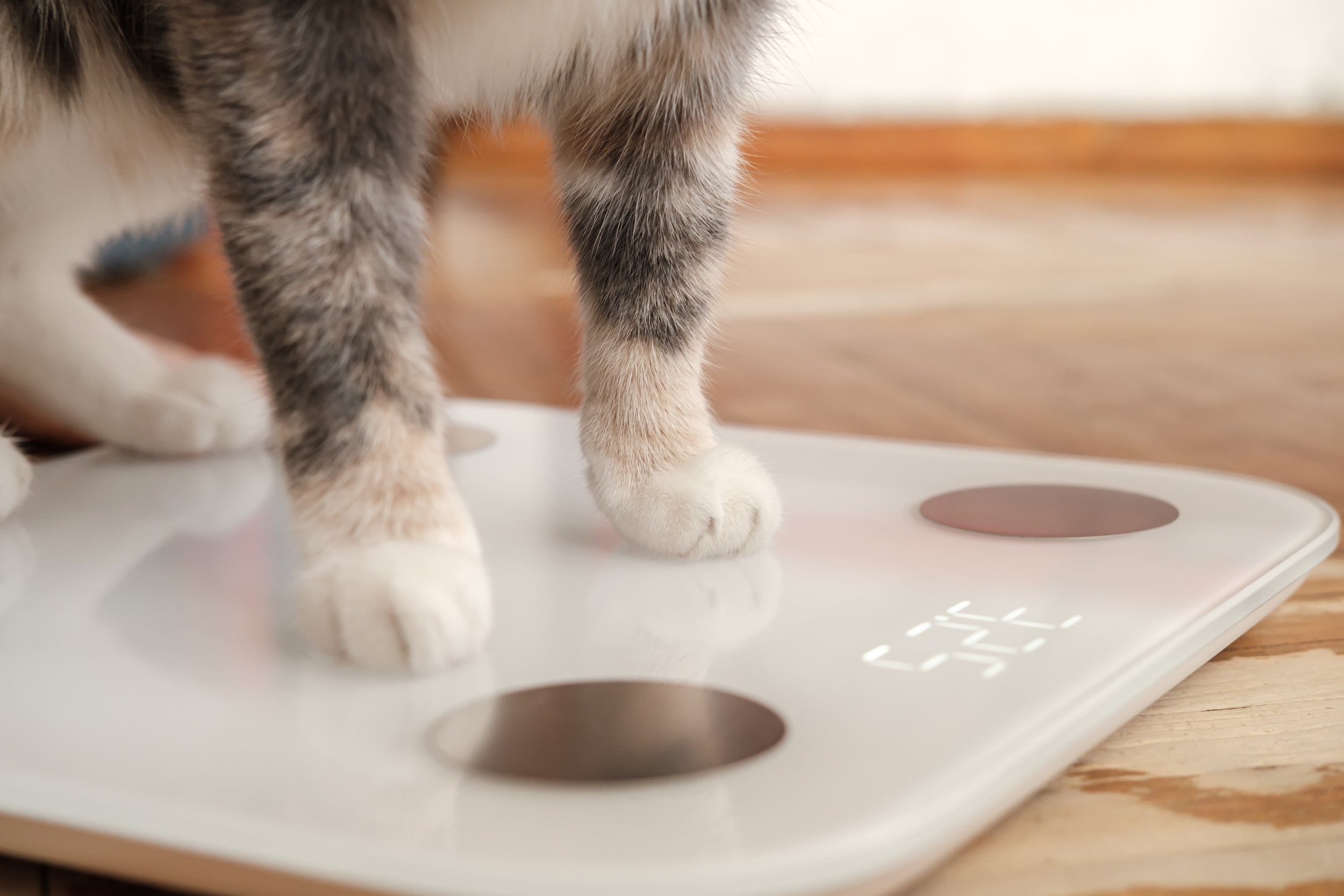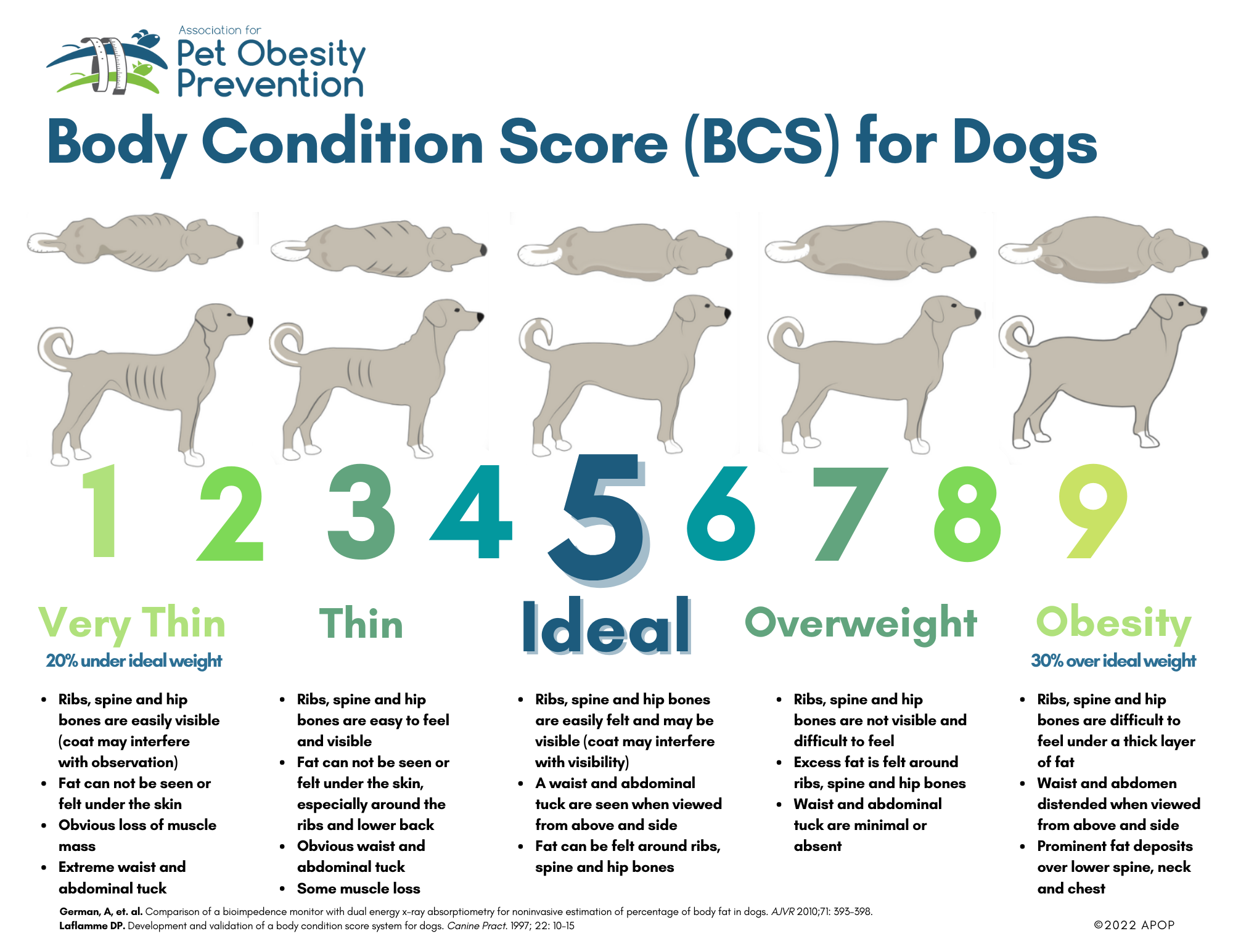The Overweight Debate
Why “Extra Fluffy” isn’t Always Cute
No one likes to admit it when their pets are overweight and that’s understandable, but pets being a little chunky can have a massive negative impact on their health in more ways than you might think. Today we’re going to get into all the details about how obesity is affecting your pets, why it matters and what you can do to help them lose weight.
According to the 2022 State of the US Pet Obesity Report from the Association for Pet Obesity Prevention, 59% of dogs in the US and 61% of cats are considered obese or overweight. That’s a lot, more than even I figured it would be and more than it was a few years prior. For clarification, I’d also like to mention that pets who are within 20% of their ideal body weight are considered overweight and pets that are over 20% heavier than they should be are considered obese. Dogs and cats with a few extra pounds are cute, I get it, but there is a point where you have to realize they’re suffering due to their weight and as pet parents it’s our responsibility to help them get back into shape. Body fat plays a vital role in our pets' bodily systems. It helps regulate their body temperature, provides cushioning, stores energy, helps to conduct nerve impulses, aids in their metabolism and regulates inflammation. The problems begin when there is too much body fat.
But why is their weight such a big deal? Well, there’s a few reasons. Probably more than I’ll be able to cover in a single blog post, but I’ll talk about a few of the most important ones.
Firstly, being overweight could be taking years off of your pets life. A study done in England, Association between life span and body condition in neutered client-owned dogs, showed dogs who are overweight are more likely to live a shorter life than those who are within a healthy weight range.
If you’re here and you’re reading this, I know you want your pets to live as long as possible. I would give years off of my own life just to have my pets live a little longer, but I can’t do that. I can do my best to keep them from being overweight, and if being chunky means they might not live as long as they could, then the cuteness isn’t worth it.
Being obese also increases their chances of diabetes, heart disease and cancer. Their body produces a protein called adiponectin, which fights the production of cancer cells. Unfortunately, when there is too much fat stored in the body, the rate at which adiponectin is produced is slowed significantly. Exercise is obviously more difficult for our chubby friends, resulting in higher blood pressure which can quickly turn to heart disease. Obesity also contributes to insulin resistance, which is a risk factor for pancreatitis and can lead to diabetes.
The extra weight is hard on their joints. Dogs and cats who are overweight are nearly two and a half times more likely to develop osteoarthritis. Banfield has witnessed a 66% increase of OA in dogs and 150% increase in cats over the past 10 years, and this data correlates to the increase of pets they’re seeing that are considered obese. Hip and joint issues can move from discomfort to chronic pain quickly. This is not only an issue due to the pain itself, but it affects your pets ability to stay active and stay emotionally happy. Dogs and cats with joint related pain, combined with being overweight, are at a greater risk for anxiety and depression. They’re less capable, meaning they have a greater reason to be fearful.
Weight impacts how well cats are able to clean themselves. Personally, I’m a strong believer in giving cats a few baths a year, but we can talk more about that in another post. Either way, cat’s are constantly licking and grooming themselves in order to keep themselves clean. The extra pounds limit their flexibility, so they can’t reach those sensitive areas. Those extra folds that you might find oh so adorable, are also a perfect breeding ground for excess bacteria. Leading to obese and overweight pets being more susceptible to skin conditions and infections and if you’ve ever had to deal with a skin infection, you know they’re not pretty. Not only are they uncomfortable for your pets, they’re uncomfortable for the owners as they can be stinky and typically require regular medicated baths.
I think it’s safe to say at this point we’re in agreement that our pets being overweight isn’t cute, but what can you do about it?
There are three basic steps that I followed to take my pets from being overweight to happy and healthy and I think everyone can give them a try! Holly was almost 75 pounds back in 2019 and Milkshake was verging on 15 pounds around the same time. So, if we’re being completely transparent - I’m not innocent when it comes to having overweight pets either. What’s important is that you realize the harm being caused by the extra weight and you work on it.
Today, Holly weighs 64 pounds, still about 1.5-2 pounds more than we’d like. However, her vet isn’t upset at anything under 65 and Milkshake is about 10 pounds, her ideal weight. Just like people, our pets weight fluctuating is normal, and they’re going to have some months that are better than others. We’re not striving for perfection, we’re working towards a goal and the three things that made all the difference in my girls was changing their diet, increasing their physical activity and watching their calories.
Changing my pets over to raw food made a massive impact on their overall health and wellbeing in more ways than just weight loss, but it certainly played a big role in helping them shed some extra pounds. You don’t have to switch to raw food, changing even 10% of their diet to a more fresh, more biologically appropriate option will still make a difference. Set aside a small amount of the meat you’re using for your own dinner and use that in place of a small amount of kibble, for example. Kibble is high in carbohydrates, grain-free foods included, and this is contributing to the increased obesity we’re seeing in pets. The carbohydrates are wasted calories that are just getting stored as fat. They don’t contain much nutritional value for dogs and no nutritional value for cats. If you’re able to substitute even a small portion of their diets for something more biologically appropriate, their bodies will be able to use that food source for much more and the calories aren’t wasted.
That being said, it’s not just carbs that contribute to weight gain. Any access calories, just like in humans, put on extra pounds. So, along with trying to feed your pets more fresh foods, you need to make sure you’re not over feeding them in general. There are tons of online calorie calculators you can put your pets information into to try and figure out how many calories they need to be eating, but I would also consult your vet just to double check the numbers. This calculator seems to be pretty accurate, so long as you’re putting in the correct information. The most important aspect is making sure you select the correct body condition score and select “weight loss” in the drop down menu.
Now that you know how many calories your pet should be eating everyday in order to lose weight, you can start keeping track. I recommend keeping a journal or spreadsheet to keep track everyday of everything they eat, including treats. At least until you have a better idea how many calories are in the regular things you’re using. If you follow us on TikTok, I have a few videos of me breaking down my dog and cats meals into calories that might be helpful! I’ll link one here and we have a playlist with more examples as well. I know it sounds silly, and I’ve had my fair share of rude comments when it comes to counting calories for my pets, but I promise, it’s worth it. This way you know you’re not overdoing it and you can always add more calories back in once they reach their goal weight.
Lastly, keep them active. Going on walks is a great way to burn calories. The average dog burns 0.8 calories per pound, per mile. For reference, Holly at 64 pounds would burn 51.2 calories per mile. So we have a goal of walking 2 miles per day, that way she can have two good sized meals, and something for a higher value treat or reward like a chicken foot, lick mat or cow ear. Not everybody walks their cats, but don’t worry, play time inside is a great way to burn calories too. There isn’t much data on how many calories cats burn during play, and I won’t try to make a guess, but if you can do 20-30 minutes of playtime per day in 10 minute sessions - you’ll be in a good spot. Plus, playing with your cat has tons of benefits aside from just burning calories.
Like I said before, I’m by far not absolved from having overweight pets. Both of my girls were significantly overweight for a long time because I didn’t know better. I didn’t know a lot of things, the changes I’ve made and the lessons I’ve learned over the years have given me the opportunity to do better for them now and I’m trying my absolute best. Holly and Milkshake are so much healthier now at 12 and 9 than they were at 6 and 3, which I know is hard to believe, but it’s true. There’s a lot of work that went into them being as healthy as they are now, but losing weight played a massive part. Holly couldn’t jump up on the couch at 5 because her hips were under so much stress from the extra weight, and now she’s always on the sofa when we get home. She can walk miles without starting to limp, and she has so much more energy. Milkshake is active, she actually wants to play and gets the zoomies everyday! When she was obese, she really didn’t do much of anything except look cute and I can say with 100% honesty she’s even more adorable now after her weight loss.
Keep in mind, progress is progress. Just like with people, weight loss is a process and it takes time. Be patient, work towards your goals for your pets and give yourself some grace. We’re all working with the information we have at any given point in time and all that matters is we’re learning and adapting to do the best we can for our pets.




